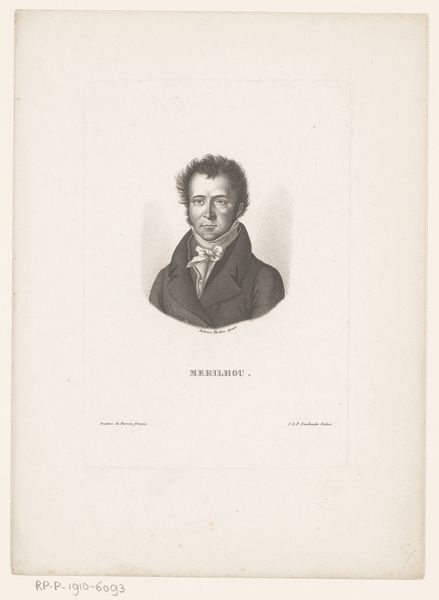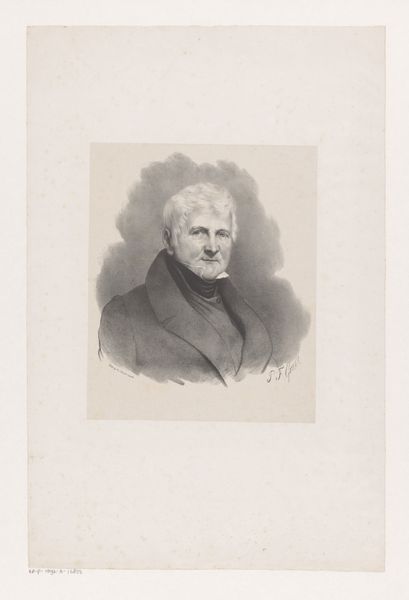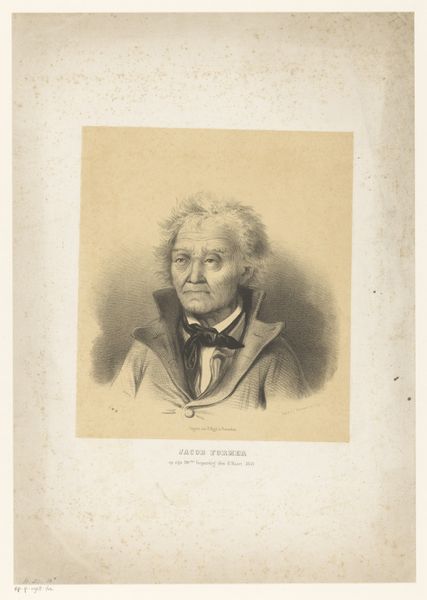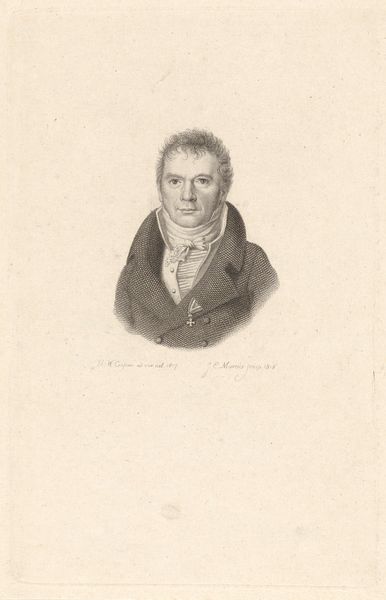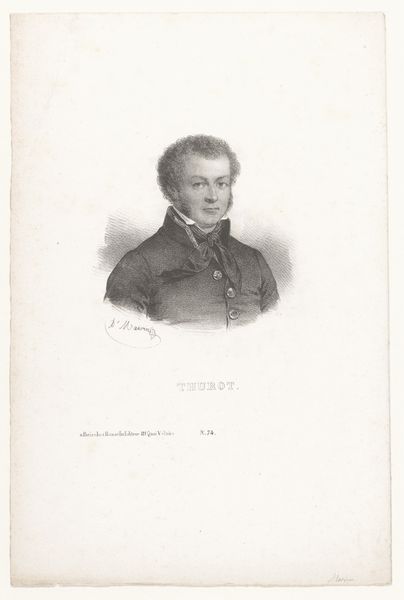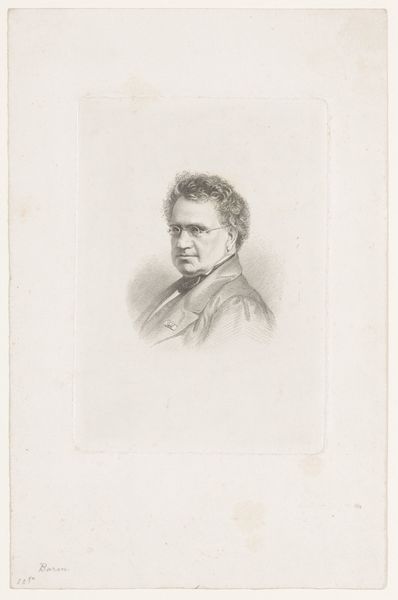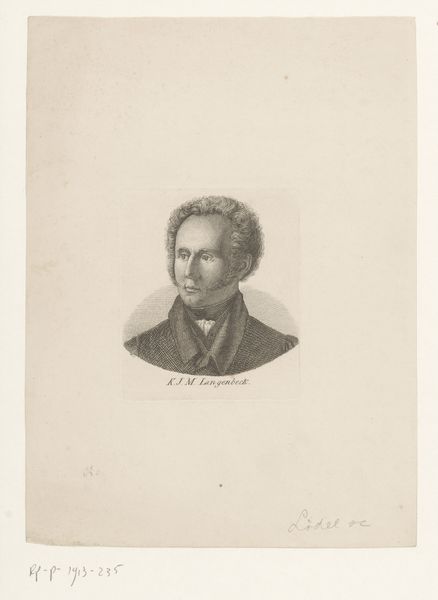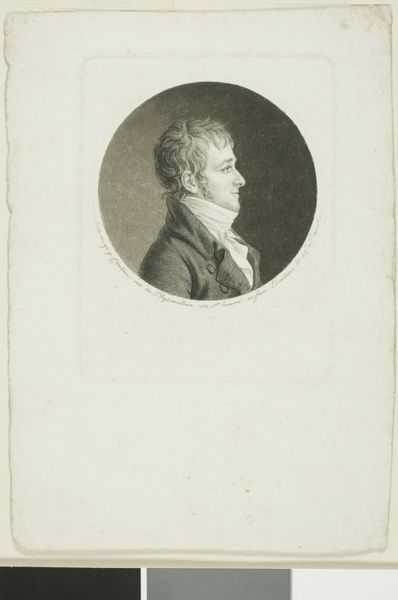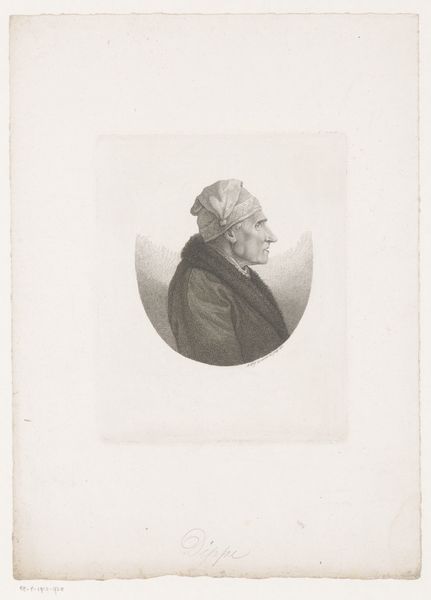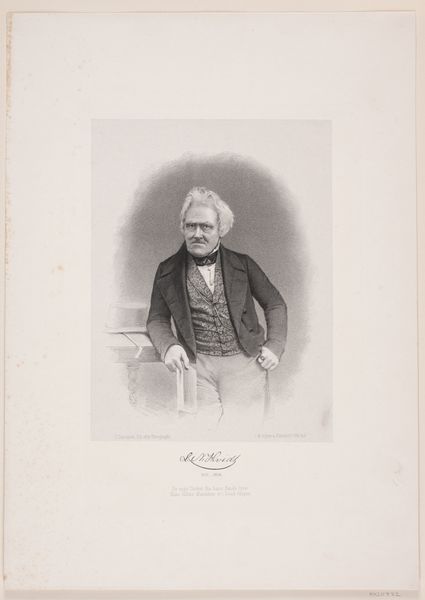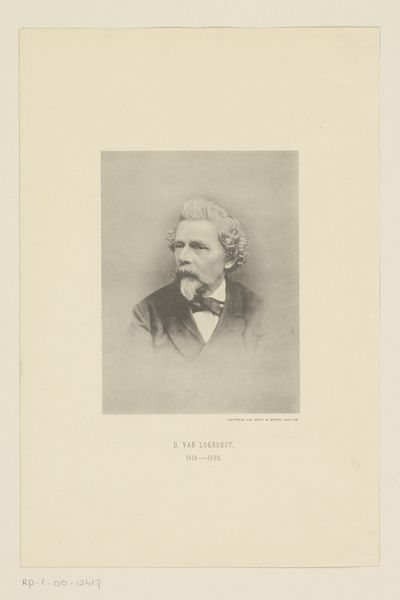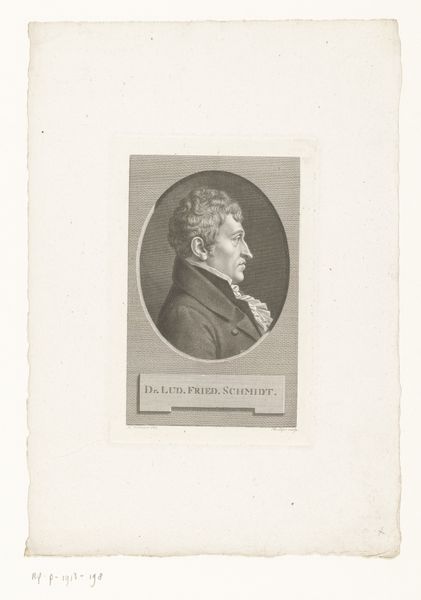
drawing, pencil, graphite
#
portrait
#
pencil drawn
#
drawing
#
neoclacissism
#
pencil sketch
#
pencil drawing
#
pencil
#
graphite
Dimensions: height 474 mm, width 306 mm
Copyright: Rijks Museum: Open Domain
Editor: So, this is "Portret van Anne-Louis Girodet-Trioson," a graphite drawing from 1825 by Pierre Roch Vigneron. It feels incredibly formal, almost austere, despite the soft medium. What can you tell me about it? Curator: This drawing presents us with an interesting glimpse into the artistic and social networks of the Neoclassical period. Considering it was rendered in 1825, near the end of Girodet-Trioson’s life, we must think about his position within the French art world. As a leading painter and a figure associated with the changing tides of revolutionary and post-revolutionary France, how do you think being the subject of this portrait would shape his self-presentation, and subsequently, our understanding of his legacy? Editor: That's a fascinating point. Given Girodet-Trioson's own artistic output, full of dramatic scenes, I'm surprised by the restraint of this portrait. Was there a shift in how artists wanted to be seen? Curator: Absolutely. We must consider the market forces that shaped portraiture. During this era, portraits increasingly served as tools for artists to promote their reputation within academic circles. The image conveyed here leans into the ideal of the intellectual, somewhat detached from the turmoil of the outside world. Can we see how this image contrasts to previous depictions of artists and intellectuals? Editor: I do! It feels like a very intentional curation of image, if you will, showing not only the man but how he wished to be perceived. Thanks, this adds so much depth to how I see it! Curator: And for me, you highlighted how carefully artists of this era used portraiture to position themselves, reflecting the shifting landscape of artistic and political power.
Comments
No comments
Be the first to comment and join the conversation on the ultimate creative platform.

